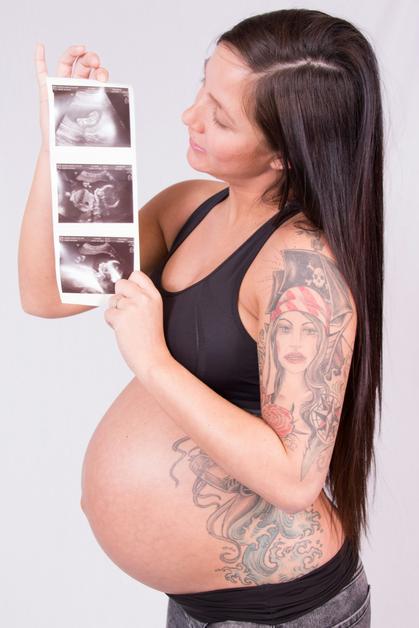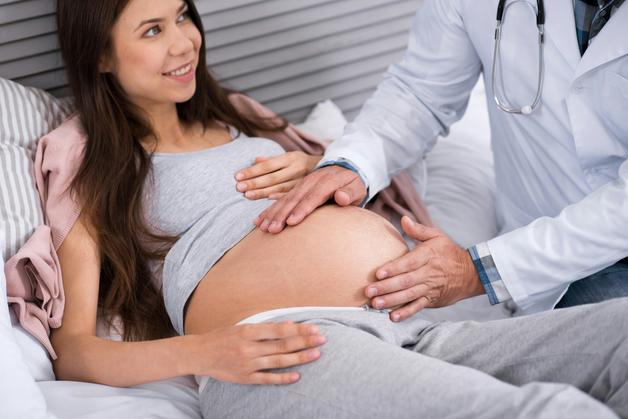Parents often carry a quiet question in the back of the mind, does one glass matter, and if so, what now. Alcohol during pregnancy is not just a lifestyle topic, it is biology, timing, and decision making under pressure. The short version, there is no known safe amount. The fuller story we will unpack together, how alcohol moves through the body and the placenta, how timing and dose shape risk, what to do if drinking happened before a positive test, realistic strategies to stop, how to handle social situations without fuss, when to ask for medical help, and how to plan for breastfeeding and future pregnancies. Clarity first, compassion always.
What you can do right now
- Stop alcohol today, even if exposure already happened, stopping now reduces risk.
- Book or attend prenatal care and share your intake honestly, including before you knew.
- Start prenatal vitamins if not already, folate daily, and ask about choline.
- If stopping is hard, ask for help, brief counseling and perinatal supports work.
Quick science snapshot
- Ethanol crosses the placenta quickly and equilibrates with fetal blood. Because the fetal liver clears alcohol slowly, exposure lasts longer than in adults. The amniotic fluid can act like a slow release reservoir.
- Dose and timing matter. High peaks from binge drinking carry greater risk for neurodevelopment.
- All beverages with ethanol carry risk, beer, wine, spirits. Beverage type does not change teratogenicity, the grams of ethanol do.
What counts as alcohol and how to size a drink
Standard drinks and ABV, easy comparisons
Alcohol during pregnancy is about exposure to ethanol, not the color of the bottle. A standard drink helps you count ethanol grams.
- United States, about 14 grams ethanol equals 12 fl oz beer at 5 percent ABV, 5 fl oz wine at 12 percent ABV, 1.5 fl oz spirits at 40 percent ABV.
- Many countries use 10 grams per unit, examples, roughly 100 ml wine at 12 percent, 250 ml beer at 5 percent, 20 ml spirits at 40 percent.
Typical ABV ranges, beer 3 to 8 percent, wine 9 to 15 percent, fortified wine and many spirits near 35 to 40 percent. If in doubt, look at ethanol grams, not just the glass size.
How alcohol affects fetal development
Absorption, distribution, and the placenta
Once a person drinks, ethanol is absorbed from the stomach and small intestine into the bloodstream. Ethanol is small and water soluble, so it crosses the placenta rapidly. Fetal blood alcohol rises with maternal levels. The fetal liver has immature alcohol dehydrogenase and aldehyde dehydrogenase, so clearance is slow. The amniotic fluid can retain ethanol and extend exposure. This is why Alcohol during pregnancy can have effects even with brief episodes.
Brain development and sensitive windows
- First trimester, organ formation, early neural patterning, significant exposure increases the chance of structural anomalies and pregnancy loss.
- Second trimester, neurogenesis and synaptic organization, disruption can alter brain architecture and later learning or sensory processing.
- Third trimester, brain growth spurt, synaptogenesis and myelination accelerate, exposure can affect cognition, behavior regulation, and sleep.
Mechanisms include altered GABA and NMDA receptor signaling, oxidative stress, and apoptosis, programmed cell death, that can remove or miswire neurons. The central nervous system develops continuously, so Alcohol during pregnancy has potential effects at any stage.
Timing, dose, and pattern, what matters most
Trimester specific risks
- First trimester, higher risk of miscarriage and some structural defects with heavier exposure.
- Second trimester, impacts on growth, sensory systems, and circuit formation can appear later as attention or language challenges.
- Third trimester, risk to brain growth and connectivity, and increased risk for preterm birth and some neonatal complications.
Peaks, frequency, and cumulative exposure
Binge drinking in many guidelines means about four or more standard drinks in two hours for women, a pattern that pushes peak blood alcohol concentration high. High peaks are strongly linked to neurodevelopmental harm. Repeated low to moderate intake adds cumulative exposure. Both patterns increase risk, peaks create intensity, repetition creates load. Alcohol during pregnancy benefits from zero intake because it removes both.
Health risks and fetal alcohol spectrum disorders
The umbrella term, fetal alcohol spectrum disorders (FASD), covers a range of outcomes from subtle learning differences to the full triad of growth deficits, facial features, and central nervous system involvement.
- fetal alcohol syndrome (FAS), characteristic facial features, growth deficiency, and neurodevelopmental differences.
- Alcohol related neurodevelopmental disorder, attention, executive function, language and memory challenges.
- Alcohol related birth defects, heart, kidney, or eye differences.
Pregnancy outcomes can include miscarriage, stillbirth, preterm birth, placental complications, and intrauterine growth restriction. Presentation is heterogeneous, two children with similar exposure may diverge because of genetics, nutrition, tobacco exposure, stress, and other factors. Alcohol during pregnancy is a known teratogen, an agent that can disturb fetal development.
If you drank before you knew you were pregnant
You may be asking, did I already cause harm. Most pregnancies include days or weeks before recognition. Risk depends on amount, timing, and pattern. A single small drink does not guarantee harm. Heavier or repeated exposure increases risk. Action now helps.
- Stop alcohol now and call your prenatal provider.
- Be ready to discuss when, how much, and whether this was a one time or a repeated pattern.
- Your clinician may arrange an early ultrasound to date the pregnancy, discuss monitoring, and plan follow up. Alcohol during pregnancy warrants individualized care, not automatic alarm.
Screening, disclosure, and prenatal care
Routine screening uses brief tools such as T ACE, TWEAK, and AUDIT C. An SBIRT model, screening, brief intervention, referral to treatment, is common. Honest disclosure helps your team tailor surveillance and support. Guidance from bodies like ACOG, CDC, and WHO align, no amount is proven safe in pregnancy. Alcohol during pregnancy is best approached with early counseling and a clear plan.
Quitting, practical strategies that work
Behavior change you can start today
- Identify triggers, time of day, people, settings, then replace the routine, herbal tea in the evening, a sparkling mocktail in your favorite glass, a short walk after work.
- Habit stacking, pair a new alcohol free action with an existing habit, after brushing teeth, do ten minutes of breathing or a short stretch.
- Delay and distract, when a craving rises, wait fifteen minutes, sip water, text a friend, fold laundry, step outside.
Coping scripts for social situations
- I am not drinking during this pregnancy.
- I am taking a health break.
- I am the driver tonight.
Short, firm, friendly. No long explanations needed. Alcohol during pregnancy is your boundary, and that is reason enough.
Evidence based supports and medical considerations
- Brief motivational counseling and cognitive behavioral therapy can reduce intake.
- Mutual help groups and specialist perinatal services add accountability and skills.
- If dependence is suspected, abrupt stopping can cause withdrawal. Supervised care protects you and the baby.
Apps that track drinks, standard drink calculators, and written goals help maintain momentum. If you see patterns returning, ask early.
Social life and enjoyable alcohol free options
Planning for events and travel
- Bring favorite alcohol free beverages to gatherings.
- Ask bartenders for a menu of zero ABV drinks, or request soda with lime, ginger ale with bitters style flavors without alcohol, or fresh juices with herbs.
- In resorts, pre arrange mocktails or sparkling water with fruit and mint.
Labels and trace alcohol
Products labeled 0.0 percent have no detectable ethanol. Those that say up to 0.5 percent ABV contain trace alcohol. Many parents choose strict 0.0 during pregnancy to avoid uncertainty. Alcohol during pregnancy benefits from simple choices, reach for water, juices, or 0.0 options.
Mocktails that feel festive
- Sparkling water with citrus and mint.
- Virgin mojito, lime, mint, crushed ice, soda.
- Warm spiced apple with cinnamon and orange peel.
Ritual matters. The glass, the garnish, the slow sip, all the celebration, none of the ethanol.
Mental health, stress, and when to seek help
Low mood, anxiety, and past trauma can raise the chance of drinking. Supporting mental health reduces reliance on alcohol as a coping tool.
- Prioritize sleep, gentle movement, sunlight, and a simple daily rhythm.
- Use brief mindfulness or breathing exercises, five slow breaths can dial down cravings.
- Ask about therapy or perinatal mental health services if sadness or worry is persistent.
If dependence is likely, specialized perinatal addiction care is recommended. Alcohol during pregnancy can be safely managed with coordinated support.
Partner and family support
A supportive home lowers effort. Make a joint commitment, reduce visible alcohol at home, and choose alcohol free options together. Decide in advance who handles drink offers at events. Share goals, celebrate progress.
Breastfeeding and alcohol
How alcohol moves into milk
Alcohol passes into milk in proportion to blood levels. Peak milk levels mirror blood alcohol peaks. Pumping does not clear alcohol faster, time does. Guidance on breastfeeding after drinking alcohol safety favors planning. Alcohol during pregnancy and the postpartum period both benefit from clear routines.
Practical timing
- For one standard drink, a rough rule is to wait about two to three hours before breastfeeding. More drinks need more time.
- The safest option is to wait until blood alcohol is back to zero. Have expressed milk ready or use another caregiver for feeds if needed.
If drinking increases postpartum, ask your clinician about supports. Terms like alcohol in breast milk and lactation and alcohol in resources can guide specific questions.
Preconception and fertility
Alcohol during pregnancy starts before the test is positive, because the earliest weeks matter. Many clinicians encourage abstinence before conception. Alcohol can affect implantation and early development, and early pregnancies are often unrecognized.
- Reduce or stop alcohol when trying to conceive.
- Partners can support by reducing intake, heavy paternal drinking can affect sperm quality and family planning.
- See resources on preconception health and alcohol for planning checklists.
Everyday scenarios and hidden alcohol
- Check labels on extracts, such as vanilla or rum extract, mouthwashes, cough syrups, and some desserts.
- Cooking lowers alcohol content but does not always remove it completely. Choose recipes without added alcohol for simplicity.
- When dining out, ask for alcohol free options and request a mocktail list. Hosting at home, offer appealing alcohol free drinks for everyone.
Alcohol during pregnancy becomes easier when hidden sources are limited and tasty alternatives are ready.
Myths and facts, quick reality check
- Myth, a small glass of wine helps the baby. Fact, no health body has found a safe threshold during pregnancy.
- Myth, beer is safer than spirits. Fact, ethanol per gram drives risk, not the label.
- Myth, drinking before the test does not count. Fact, alcohol does not affect the test, but exposure before a positive result can still reach the embryo.
Alcohol during pregnancy invites simple rules, zero is the protective choice.
Clinical perspective and screening tools
Prenatal visits often include brief screens such as T ACE, TWEAK, and AUDIT C. An SBIRT approach can reduce drinking in many cases and connect patients to care. National groups like NIAAA, CDC, WHO, and ACOG align in their advice, no amount has been proven safe in pregnancy. Alcohol during pregnancy deserves consistent, non judgmental conversations that focus on support.
Standard drink reference, quick table in words
- Beer at 5 percent ABV, one can at 12 fl oz, about 14 grams ethanol in the United States definition.
- Wine at 12 percent ABV, one glass at 5 fl oz, about 14 grams ethanol.
- Spirits at 40 percent ABV, one shot at 1.5 fl oz, about 14 grams ethanol.
- Where a 10 gram unit is used, expect smaller volumes per unit.
Use a standard drink calculator if sizes vary. Alcohol during pregnancy risk talks rely on accurate counting.
Diagnosis, support, and outcomes in suspected FASD
Assessment integrates exposure history, growth, facial features when present, and neurodevelopmental testing. Imaging or targeted tests may help in selected cases. Early intervention improves outcomes, speech therapy, occupational therapy, educational supports, and family coaching. The phrase prenatal alcohol exposure (PAE) is often used in evaluations, and clinicians may discuss the risk of fetal alcohol spectrum disorders with prenatal alcohol exposure. Alcohol during pregnancy is the modifiable upstream factor, stopping now still helps.
If you want a compact action list
- Note date, time, and quantity of any exposure.
- Tell your midwife or doctor.
- Plan adapted follow up, sometimes with extra ultrasounds.
- Line up supports if stopping feels difficult.
- Keep simple scripts ready for social settings.
Alcohol during pregnancy responds well to small practical steps repeated daily.
Suggested visuals and alt text
- Timeline of fetal development and risk windows, alt, timeline showing trimesters and brain development milestones.
- Standard drink chart, alt, chart comparing common drink sizes and grams of ethanol.
- Mocktail carousel, alt, non alcoholic drinks with recipes and garnishes.
- Scripts infographic, alt, short refusal lines for social situations.
Credibility notes
Refer to national guidance from CDC and WHO, specialty society recommendations from ACOG and SMFM, and public health agencies. Include date last updated, author credentials, and medical reviewer notes for transparency. Alcohol during pregnancy content performs best with clear definitions, consistent terminology, and direct answers to common questions like does a single drink harm the fetus.
Short, anonymous testimony
I had two drinks before I realized I was pregnant. My midwife listened without judgment. We scheduled an extra ultrasound and a reassuring follow up. That support changed my week and helped me stop completely.
Glossary for quick reference
- ABV, alcohol by volume, the percent alcohol in a beverage.
- Standard drink or unit, a reference amount of ethanol, often 10 to 14 grams.
- BAC, blood alcohol concentration, the amount of alcohol in blood.
- Binge drinking, a pattern that raises blood alcohol quickly, for many women about four drinks in two hours.
- Teratogen, an agent that can disturb fetal development.
- FASD and FAS, spectrum of conditions associated with prenatal alcohol exposure.
- IUGR, intrauterine growth restriction.
- AUD, alcohol use disorder.
Key takeaways
- Alcohol during pregnancy has no known safe threshold. Zero intake protects fetal development.
- Timing and pattern matter. Peaks from binge drinking and cumulative exposure both raise risk.
- If you drank before you knew, stop now, tell your clinician, and set up monitoring. Early action helps.
- Practical strategies, 0.0 drinks, simple refusal scripts, habit stacking, and brief counseling make alcohol free living doable and satisfying.
- Specialized help exists for dependence. Coordinated perinatal care is safe and effective.
- For breastfeeding, time feeds after any intake, and plan milk in advance. When in doubt, wait until BAC returns to zero.
- For planning a pregnancy, reduce or stop now, align partner goals, and review preconception health.
For personalized tips, growth tracking, and free child health questionnaires, download the Heloa app at https://app.adjust.com/1g586ft8.
Questions Parents Ask
Can doctors test if my baby was exposed to alcohol in utero?
Short answer: yes, there are tests, but they have limits and are not routinely done for every pregnancy.
There are biological markers that can indicate prenatal alcohol exposure—examples include maternal blood tests (PEth), and neonatal tests on meconium, umbilical cord tissue, or newborn hair. Each test covers a different time window (for example, meconium mainly reflects later-pregnancy exposure), and none can predict how a child will develop. Because of sensitivity, timing, cost, and ethical or legal considerations, clinicians usually rely first on an honest maternal history and targeted testing only when there is concern. If you’re worried, tell your caregiver—open discussion helps decide whether any testing or extra follow-up is useful for your situation.
Will prenatal scans show alcohol-related harm?
Short answer: usually no — many effects of prenatal alcohol are functional and won’t appear on routine scans.
Ultrasounds are good at checking fetal growth and spotting major structural problems. Heavy alcohol exposure can sometimes be associated with growth restriction or certain physical anomalies that an ultrasound might detect. However, most alcohol-related brain differences affect wiring and function, and these typically do not show up on prenatal imaging. That’s why clinicians focus on accurate dating, appropriate growth checks, and planning developmental follow-up after birth rather than expecting a scan to rule out all risks. If you’re anxious, ask your caregiver about extra monitoring or early developmental screening after delivery—early support makes a difference.
Can supplements (like folate or choline) undo harm after I drank before knowing I was pregnant?
Short answer: supplements support healthy development but do not erase prior alcohol exposure.
Taking prenatal vitamins (including folate) and addressing nutrition is important and helpful for overall pregnancy health. Choline is being studied and shows some promise in supporting brain development, but it’s not a proven cure for prenatal alcohol effects. No supplement reliably reverses alcohol-related harm. The best steps after exposure are to stop drinking, start or continue prenatal vitamins, discuss choline with your clinician if relevant, and arrange appropriate prenatal care and follow-up. If you feel worried, your care team can help plan monitoring and early interventions if needed.

Further reading:
- About Alcohol Use During Pregnancy: https://www.cdc.gov/alcohol-pregnancy/about/index.html
- Drinking alcohol while pregnant: https://www.nhs.uk/pregnancy/keeping-well/drinking-alcohol-while-pregnant/
- Alcohol and pregnancy: MedlinePlus Medical Encyclopedia: https://medlineplus.gov/ency/article/007454.htm









